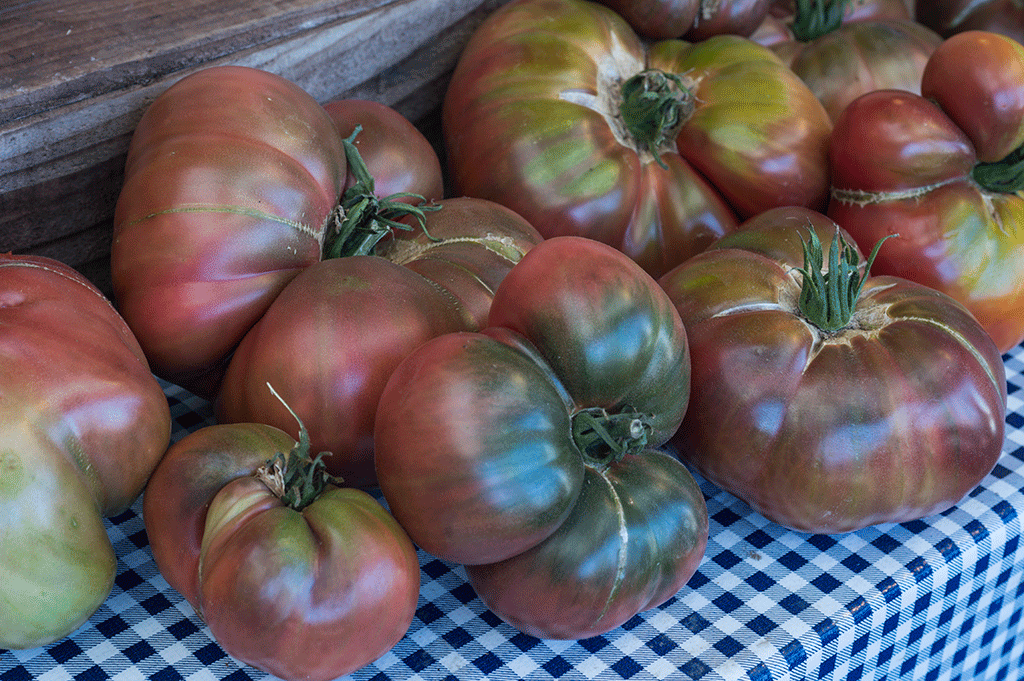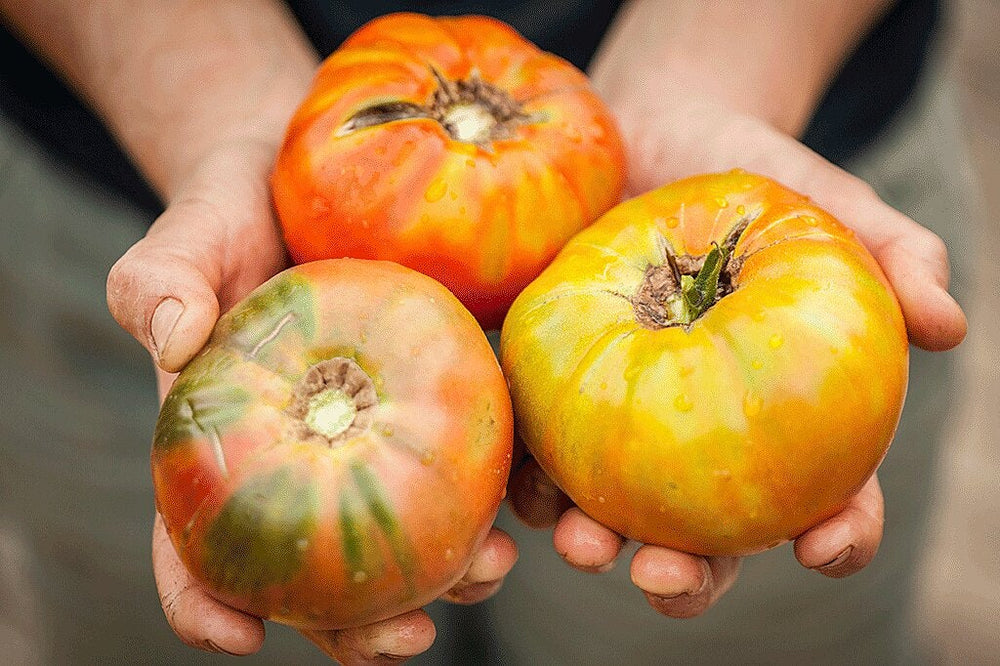Market farmers grow heirloom tomatoes by the bushel, selling their harvests at farm stands and markets, and through CSAs (Community Supported Agriculture). In other words, they're heirloom tomato growing experts. Garden writer Julie Martens Forney had a chance to interview several seasoned market farmers and talk to them about their tried-and-true methods for growing heirloom tomatoes. Here, she shares their best tips—in their own words—so you can try them for yourself in your own garden.
Gary Mount of Terhune Orchards (Princeton, New Jersey)
Gary has been farming for 40 years and growing heirloom tomatoes for 30. He finds that there "are better tastes in heirloom tomato varieties, although we've found some modern ones that taste pretty good." He adds, "Our customers choose a favorite item not just based on taste, but on the whole package. They're very interested in the back story of the crop." Some of Gary's favorites for the Mid-Atlantic region include Cherokee Purple and Brandywine.
Gary's Tips for Growing Heirloom Tomatoes
- Stake plants. "Many heirloom varieties are indeterminate with a spreading growth habit and don't have natural resistance to some of the diseases. That's why you have to stake them," he says. "There's no 3-second rule in the garden. Once a leaf or tomato touches the ground, it may have picked up a disease spore. We used to grow tomatoes sprawling many years ago, and we'd lose 50 to 60 percent of the crop." These days, Terhune Orchards grows their heirloom tomatoes on an 8-foot fence trellis. "Our guys actually use a ladder to pick tomatoes," Gary says.
- Mulch beneath plants. When rain splashes soil onto plants, diseases can move from the soil to the leaves. "With our heirlooms mulched and trellised, plants stay healthy. Crop loss is under 10 percent," Gary says. "Heirlooms sell very well but the plants don't tend to produce as well as the modern hybrids. So it's important to do everything you can to prevent diseases and protect the harvest you do get."


Brad & Jen Stufflebeam of Home Sweet Farm(Brenham, Texas)
The Stufflebeams have been farming for 22 years, and during that time, they've raised over 100 different heirloom tomato varieties. "Every year I hear people reminisce that ‘these are like the tomatoes my grandmother grew," Brad says. "I tell them, they are varieties your grandmother grew."
His favorites include Russian varieties, like Black Prince and Black Krim. "These do well in the South because they're used to a shorter season. If we plant them early, they produce before the heat sets in," he says. "Another South Texas tradition is Yellow Pear, although it does split if it gets too much water."
Brad's Tips for Growing Heirloom Tomatoes
- Add compost in the off-season. Cover beds with compost the season prior to planting. "I've consistently seen a big difference when I top-dress beds with compost in fall before planting versus when I don't do it," he says. "Compost conditions soil well for tomatoes."
- Don't pick when they're wet. "I've learned not to harvest tomatoes after rain. At that point, they have taken up a lot of water and don't taste as good. Tomatoes are much more flavorful if I can wait a day or two after rain before picking."
Suzanne Ballard of Dinihanian's Farm Market(Beaverton Oregon)
Suzanne is the farm/market/CSA manager of this family farm, which started in 1890. Previously, she tended an organic farm in North Carolina for 20 years. Her grandparents were farmers, and Suzanne helped them grow tomatoes, including many of the same varieties grown as heirlooms today.
Suzanne's Tips for Growing Heirloom Tomatoes
- Choose regional tomatoes. "One of the biggest keys to success with heirlooms is finding the right tomato for your region," Suzanne says. "Heirlooms are grown in certain regions because the conditions there are ideal. For instance, many Amish ones came from cooler regions. In hotter areas, to prevent sunscald, you want heirloom tomato plants that provide good leaf coverage, like Brandywine." Regional growing conditions can affect flavor, too. "We grow tomatoes here in Oregon that I grew in North Carolina, like German Johnson and Cherokee Purple, and the taste is completely different," she says. "If you understand where a tomato comes from, you can determine if your region can deliver similar growing conditions."
- Consider how you plan to use them. Make sure the heirloom tomato variety you choose is something that meets your expectations in terms of kitchen use. "If you want a salad tomato, don't plant a paste tomato," she says. Some, like Marglobe, suit multiple categories. "My grandmother grew this outstanding tomato," she says. "It's great for fresh eating or canning. Rutgers can be used in both ways, too. For slicing, go for the best tasting bi-colored beefsteak, Mr. Stripey."
Article written by Julie Martens Forney.




 Herbs
Herbs
 Vegetables
Vegetables
 Fruit
Fruit
 Flowers
Flowers
 Succulents
Succulents


